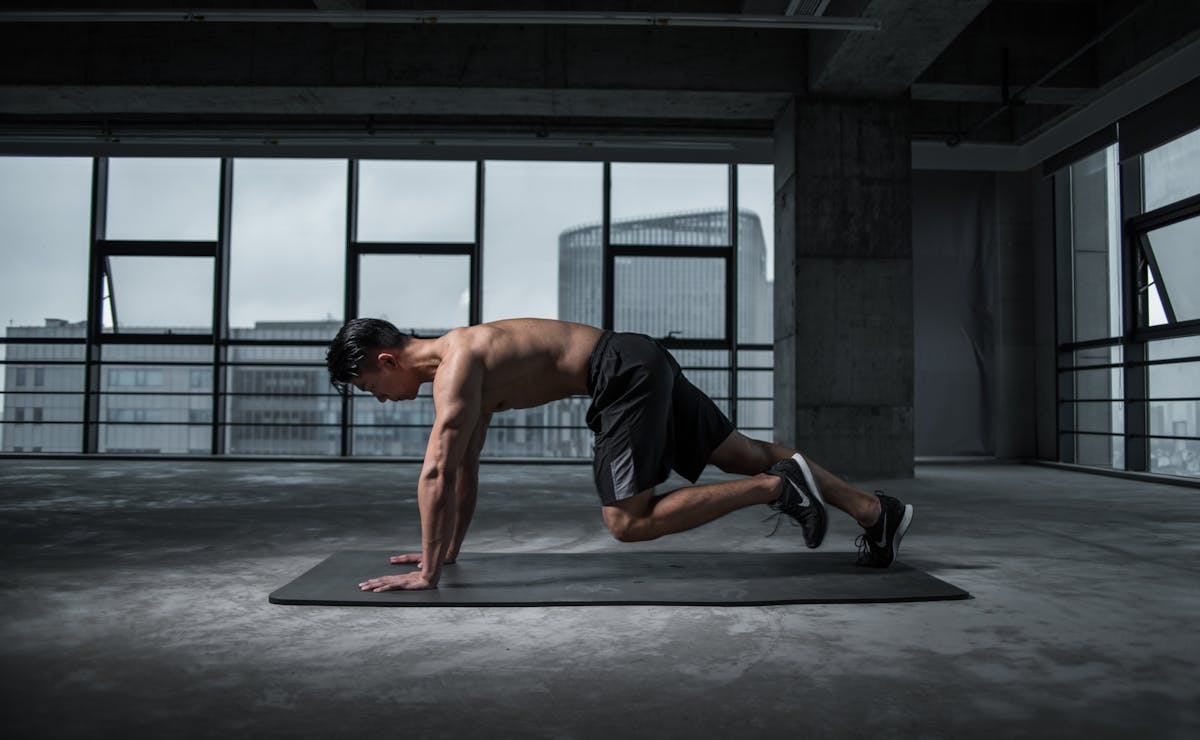Have you ever imagined running without moving? This is precisely the idea behind stationary running, a type of stationary running, as the name suggests, based on HIIT (high intensity) training.
Practicing this sport has become very common in countries where the climate is very cold and where the best option, sometimes, is to stay at home. But this can be a good alternative for physical activity for anyone anywhere in the world, on those days when there are more commitments or when the routine does not allow for long workouts.
Throughout this article, learn more about stationary running, its benefits and how to practice it.
What is stationary running?
Stationary running is an aerobic exercise that mimics running, but without the athlete’s movement. It can be performed with the assistance of equipment, like an elastic band that keeps the body in the same position even when moving, or without any form of support or aid.
In addition, as opposed to regular running, in stationary running the athlete does not employ the muscles that move him/her in forward direction. His/her attention is concentrated at the ends of the feet, so the exercise ultimately makes the ankle and leg muscles much stronger.
“Can I replace traditional running with stationary running?”
Stationary running is not a substitution for regular running, but rather a form of running, yes! You can perform it as a sort of aerobic physical activity, strengthening your muscles and preserving respiratory and cardiovascular health.
It’s an excellent choice when you cannot step out of the house for some reason or in weeks or months when you have such a hectic schedule that you cannot incorporate more complex exercises in your daily routine.
7 benefits of stationary running
Stationary running works the muscles in your ankles, legs, calves, thighs, glutes and even your abdomen, because they are all directly linked to the impact it has on conditioning and strengthening your body.
So, can you lose weight and lose belly fat by doing this activity? Yes! It also stimulates the burning of calories and fat, which helps with weight loss.
But it doesn’t stop there: below, see a list of seven advantages of trying it.
- Helps with cardiorespiratory fitness and blood circulation
- Burn calories
- Lowers blood sugar levels
- Strengthens the knees
- Develops balance, agility and motor coordination
- Reduces the risk of falls and injuries
- Improves posture
Not to mention the increased well-being and self-esteem simply because the skeleton is in motion! Did you know that physical activity is a great ally against depression ?
And how to do stationary running?
Before you start, find the types of stretches that you like and do them to warm up your muscles and get them working. For example, try so-called “dynamic stretches,” which involve more movement and in which you gradually increase the speed of the movements.
Also do a light warm-up lasting 5 to 10 minutes, simulating the movement of stationary running with a light walk or march.
You can do the exercise with or without elastic, depending on your preference. See some drawings below.
With elastic
Secure the elastic in a secure, firm place, taking care not to have any furniture or appliances nearby. Make sure to secure it so that when you pass it around your body, it will be at the exact height of your hips.
With the elastic band already on your waist, move away from where it is attached, feeling your body create resistance against it. Focus on your breathing and start running.
No elastic
With your legs parallel to each other, in the same place you are, start a running movement, lifting your knees alternately. Gradually, increase the reach of your knees, raising one and then the other until they reach your hips.
As you switch knees, alternate the movement of your arms, keeping them bent and raising and lowering one, then the other. The secret is to move them naturally and in rhythm with the raising of your legs.
Another option is to bend your knees back and try to make your heels touch your glutes alternately.
You can also opt for a shorter movement, keeping your body still in place, lifting both heels off the ground and alternating between gently lifting one toe, then the other.
Be careful not to bend your spine, forming a kind of “C” shape in relation to the floor! Keep your gaze forward and alternate the movement of your arms at the same intensity.



